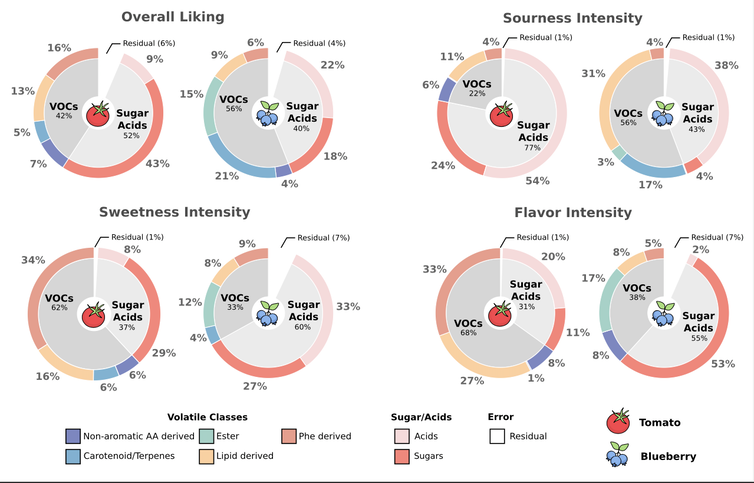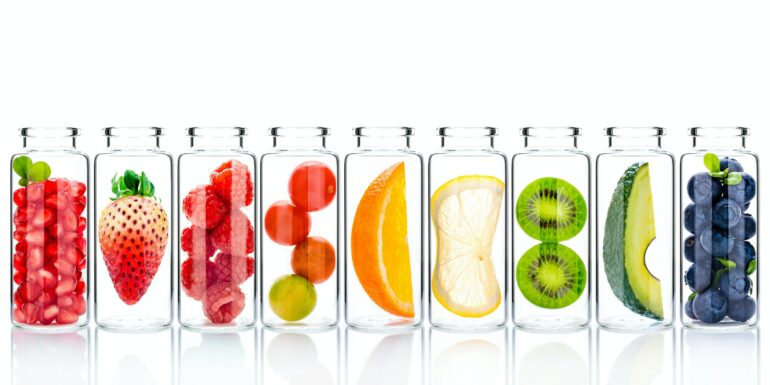The Research Brief is a short take about interesting academic work.
The big idea
Which flavors and chemical compounds make a particular variety of fruit more appealing to consumers can be identified and predicted using artificial intelligence, according to our recently published study.
Flavor, defined by scientists as the interaction between aroma and taste, is chemically complex. The sugars, acids and bitter compounds in food interact with the taste receptors on our tongues to invoke taste, while volatile compounds that interact with olfactory receptors in our noses are responsible for aroma.
Breeding for flavor is a difficult task for many different reasons. For one, fruit and vegetable plant breeding programs need to improve several different traits that appeal to both producers and consumers. Creating the optimal genetic combination that covers all these traits is difficult, so breeding programs often deprioritize flavor to focus on improving disease resistance and increasing yield. Plant breeders must also evaluate hundreds to thousands of potential varieties. Testing a single sample in an objective way requires consumer panels of up to 100 people, which can be expensive and impractical to arrange.
To streamline this process, we developed an algorithm to predict how consumers will rank flavor in tomatoes and blueberries. We created a database containing all known compounds associated with flavor in all varieties of these fruits. Then, we compared this database with existing consumer panel ratings on sweetness, sourness, umami and overall flavor and preference of different varieties. By modeling how consumer ratings varied with the chemical makeup of different varieties of these fruits, this allowed us to determine which compounds most influence flavor perception.

Volatile organic compounds are a big part of what consumer panels use to rate flavor in tomatoes and blueberries.
Vincent Colantonio and Luís Felipe Ferrao, CC BY-NC-ND
We found that the volatile organic compounds, or chemicals that form a gas, responsible for aroma are a big part of why people like a given variety. Specifically, we estimated that 42% and 56% of the overall preference score of a variety of tomato or blueberry, respectively, was associated with aroma.
Aroma also played a role in perception of sweetness – volatile compounds contributed 33% to 62% of how consumers rated sweetness.
Finally, we were also able to identify several chemical compounds that most contribute to this flavor and sweetness perception in tomatoes and blueberries.
Why it matters
Flavor plays an important role in which varieties of fruit people choose to eat. We believe that our models can help plant-breeding programs develop more flavorful varieties of fruit by making it easier to determine what objectively makes one variety taste better than another without needing to gather large consumer panels. By identifying exactly what influences…

